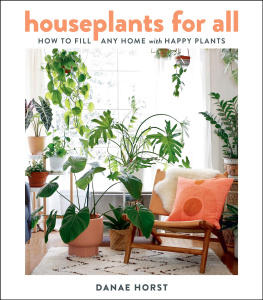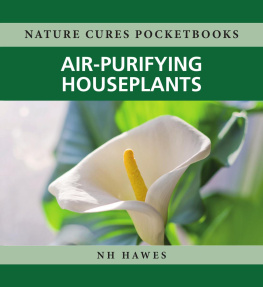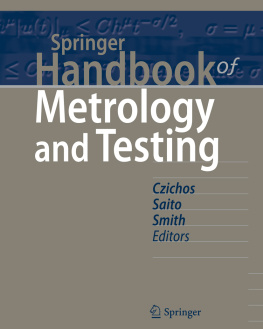Danae Horst - Houseplants for All
Here you can read online Danae Horst - Houseplants for All full text of the book (entire story) in english for free. Download pdf and epub, get meaning, cover and reviews about this ebook. year: 2020, publisher: HMH Books, genre: Children. Description of the work, (preface) as well as reviews are available. Best literature library LitArk.com created for fans of good reading and offers a wide selection of genres:
Romance novel
Science fiction
Adventure
Detective
Science
History
Home and family
Prose
Art
Politics
Computer
Non-fiction
Religion
Business
Children
Humor
Choose a favorite category and find really read worthwhile books. Enjoy immersion in the world of imagination, feel the emotions of the characters or learn something new for yourself, make an fascinating discovery.
- Book:Houseplants for All
- Author:
- Publisher:HMH Books
- Genre:
- Year:2020
- Rating:3 / 5
- Favourites:Add to favourites
- Your mark:
- 60
- 1
- 2
- 3
- 4
- 5
Houseplants for All: summary, description and annotation
We offer to read an annotation, description, summary or preface (depends on what the author of the book "Houseplants for All" wrote himself). If you haven't found the necessary information about the book — write in the comments, we will try to find it.
Houseplants for All — read online for free the complete book (whole text) full work
Below is the text of the book, divided by pages. System saving the place of the last page read, allows you to conveniently read the book "Houseplants for All" online for free, without having to search again every time where you left off. Put a bookmark, and you can go to the page where you finished reading at any time.
Font size:
Interval:
Bookmark:

M ost of us have been there: You see a plant at the store, fall in love with it, and bring it home, only to watch it struggle and perhaps even die a slow death, all the while wondering, What am I doing wrong? Why cant I make you happy? Eventually you succumb to the notion that you arent a plant person or buy into that old black thumb myth. The truth is, anyone can be a plant person! The first step is to learn the essentials about what plants need to be happy and healthy, and then choose the plants whose needs match what you, and your environment, can provide for them.
Well do a deep dive into everything plants need a little later in the book, but first, some key ingredients to plant care every successful plant person needs to understand: light and humidity.
Light is to plants as food is to animals. Photosynthesis, the process through which plants convert light into sugar, creates the energy that plants need to survive. Water and nutrients are also important, but without light, nearly all plants eventually die. Light is the most essential need a plant has, and yet its one of the most misunderstood and under-considered aspects of plant care.
Misconception: I dont get direct sun, so I cant have plants.
Truth: Most indoor plants dont require direct sun, and many wont tolerate it for more than a few hours. In the afternoon, direct sun (in the Northern Hemisphere) is especially strong and can scorch plants leaves. Nearly all plants do best in bright indirect light (see ).
Misconception: I have a light bulb near a plant. Thats enough light, right?
Truth: Most household light bulbs dont have enough of the spectrum of light that plants need, so apart from a fluorescent light bulb (which low-light plants can usually work with), or a type of light called a , a light bulb alone isnt enough light for a plant.
Misconception: I have a room with no windows. A low-light plant will be fine there.
Truth: While some low-light plants can tolerate zero natural light for a time, they will eventually die of starvation in a room with no natural light. A grow light setup is the only way to keep plants happy long-term in a room without a window.
Misconception: I have a large window, so plants on the other side of the room are getting lots of light.
Truth: Once you understand the way light travels through a room, youll notice that even in rooms with large windows, areas far away from the windows or in a corner arent receiving much light at all. Plants that require bright light need a spot right near the window, preferably in front of it where the light is strongest.
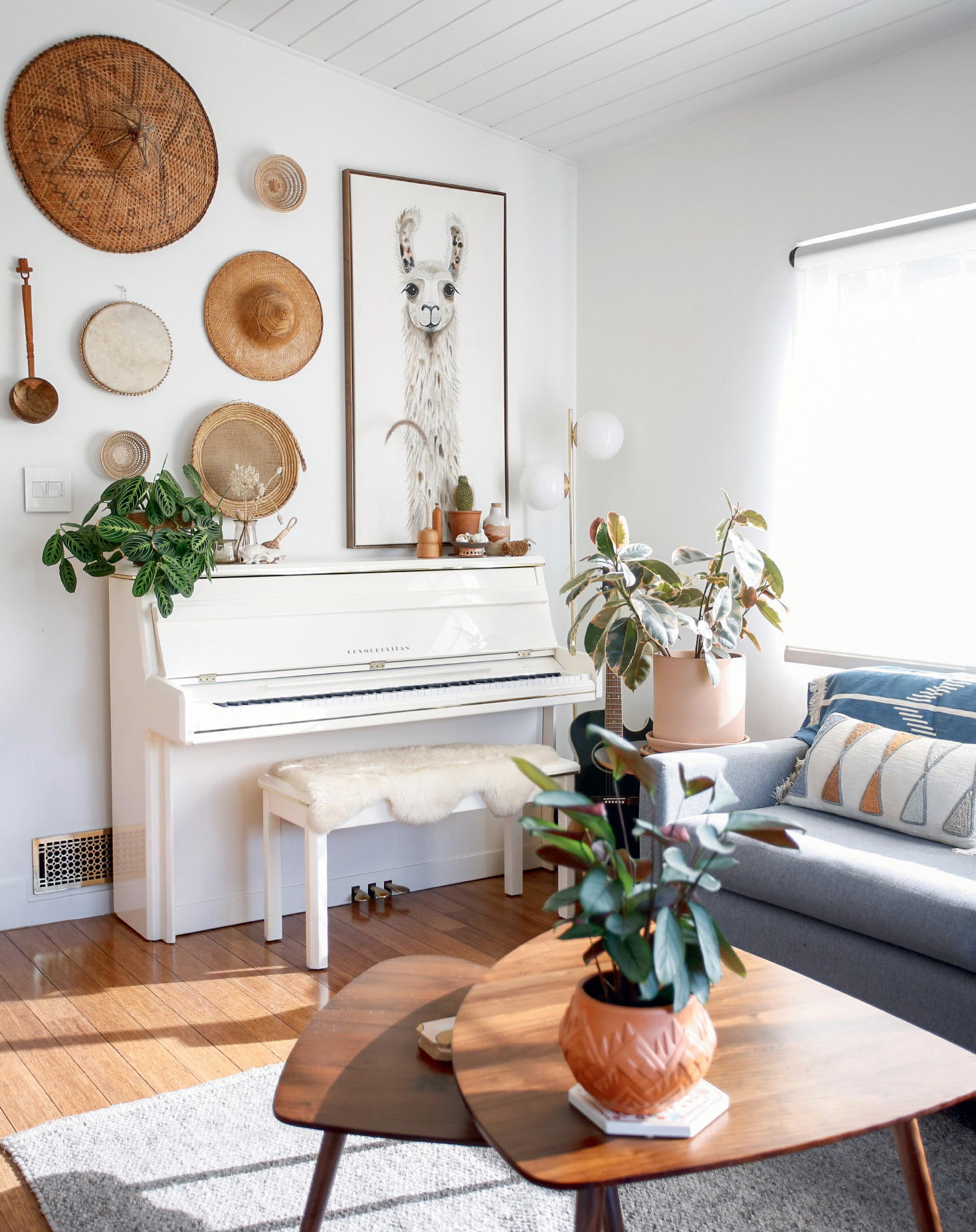
In the world of plant care, direct sun occurs when the actual sun (not just light) is visible through the window and so the suns rays are hitting your plants. Indirect light occurs when ambient light is present but the sun is not directly visible through the windows that let the light in. Window treatments that allow most of the light through can also filter the direct sun into indirect light. Around our shop, I often explain the difference by asking this question: Imagine the plant has eyes. Can it see the sun? If your answer is yes, the plant gets direct sun. If your answer is no, but the room is still very bright, the plant gets bright indirect light.
Direct sun comes in at an angle. This angle changes depending on the time of year, the building position, and the architectural style. The area closest to the window receives the brightest light but also gets hit with the suns rays directly, which can burn delicate leaves. As you move farther from the window, the strength of the light drops off.
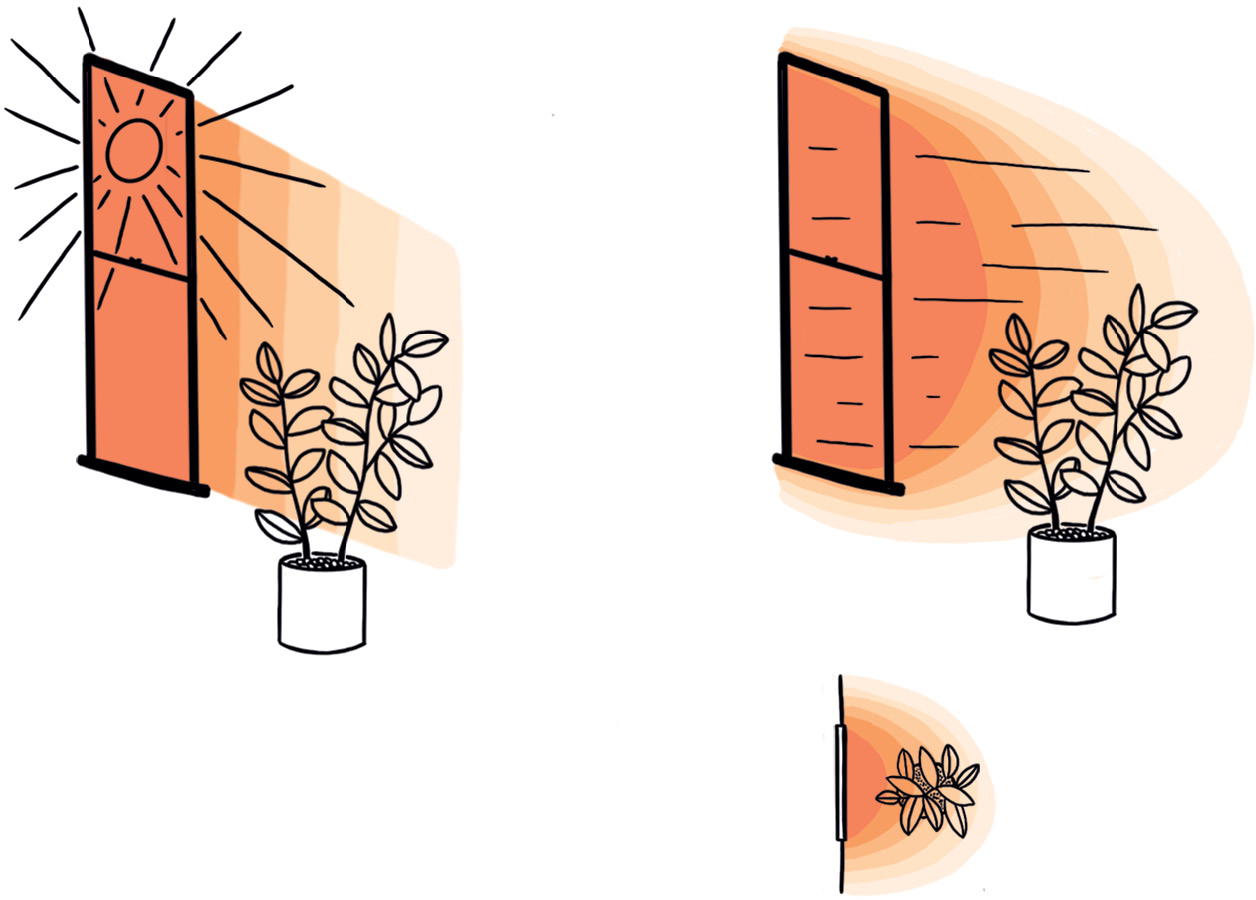
Indirect light appears to illuminate the room in more of an arc shape as it comes through the window. Light still tapers off as you move farther from the window, and youll notice the corner areas closest to the window are just as dark as the areas farthest from the window.
Understanding the difference between these two types of light is important since many plants will be overwhelmed by direct sun. Youll need to consider the kind of light an area receives when selecting your plants for that area. Well dig into this more in Section Two.
Youll also encounter certain light terms when looking at care information for plants. Understanding these terms better will help you choose plants that are suited for your space and care for them properly.
Direct Sun or Full Sun: The plant needs to be in the path of the sun (remember, if the plant had eyes, could it see the actual sun?) and get 4 or more hours of direct sun each day.
Bright Indirect Light: The plant needs a bright spot, usually within a few feet of a window, where there are 6+ hours of light, but not direct sun, each day.
Medium or Low Light: There are very few plants that require this kind of light indoors, but if you encounter this on a tag, that plant can tolerate a spot farther away from a window with no direct sun.
Full Shade: This term often appears on plants that are mainly intended for outdoors. With indoor plants, full shade is equivalent to bright or medium indirect light.
Partial Shade or Mixed Shade: Usually used for outdoor plants. The indoor equivalent would be a mix of direct sun and bright indirect light.
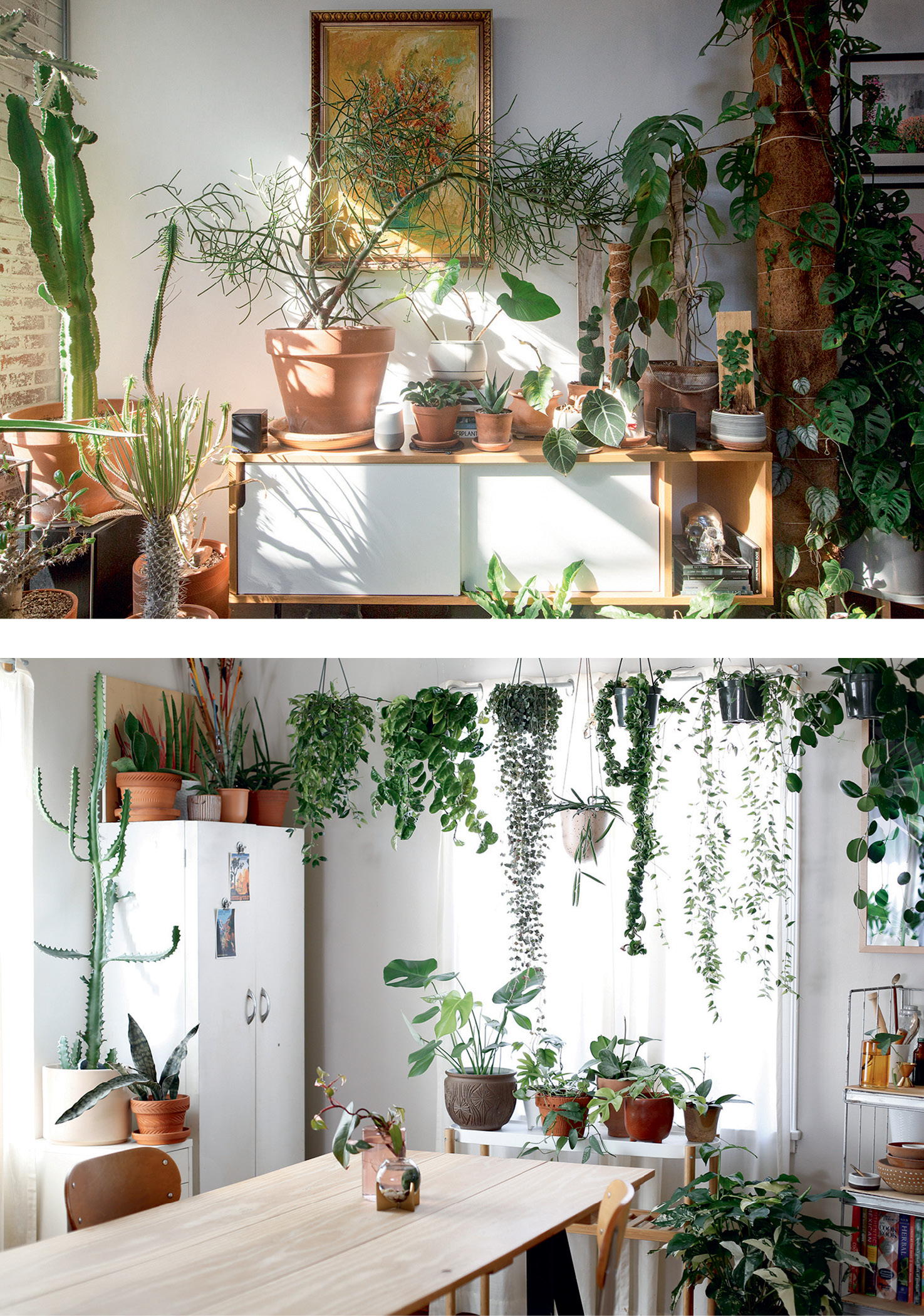
Photo: Cary Smith
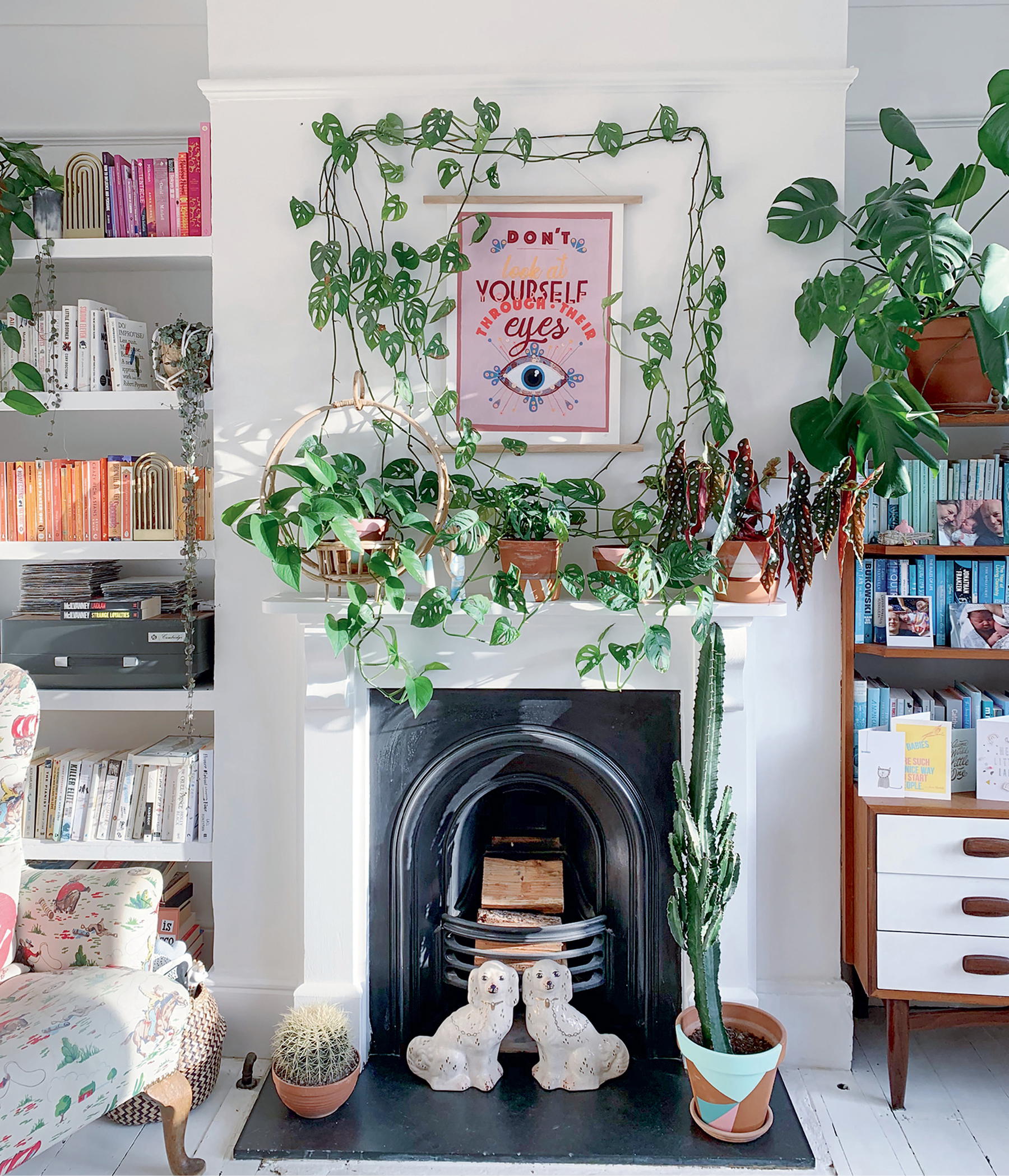
Photo: Zo Pearson
The human eye is a bad measuring device, since our eyes automatically adjust to different levels of light. A few tricks and tools can help us gauge the light in our homes so we can tell how much light we can offer our plants.
A shadow test will give you a general idea of whether your light is direct or indirect (filtered or diffused). Simply place your hand about a foot away from where you want to put a plantdoes your hand create a defined shadow? You likely have direct sun there. Do you see a softer, less defined shadow? You have indirect light.
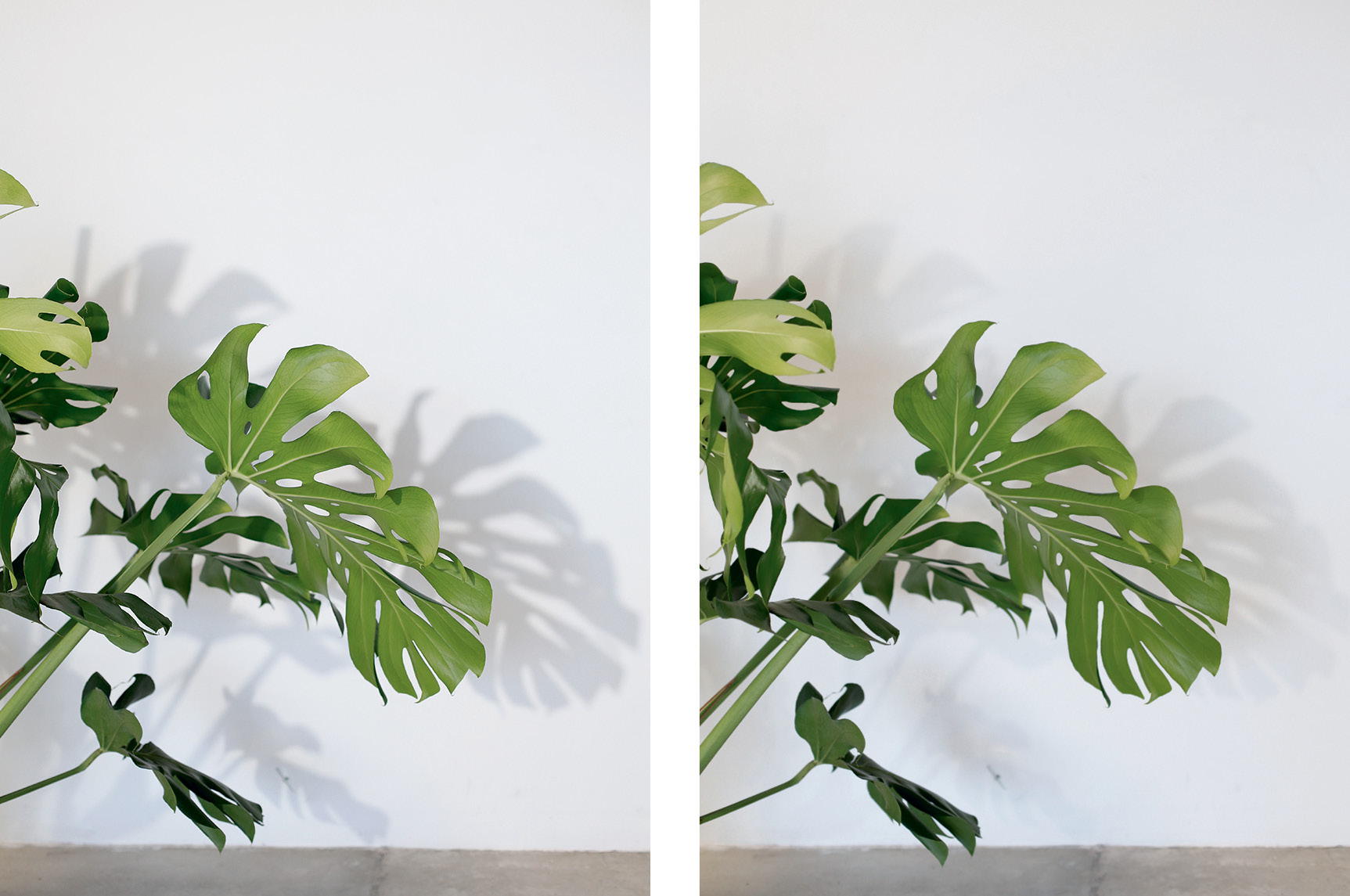
A light meter (or light meter app) can be a helpful tool to give you a good idea of the range of light you have available. Look for one that gives you measurements in a unit called foot-candles (an antiquated term that means how much light hits an area of one square foot when an even light source is in the center of it) rather than just lumens. Separate light meter devices will vary in cost and features, but if youre only using a light meter for plants, its not worth spending a ton of money on one. Read reviews and look for one thats well-rated, can provide foot-candle measurements, and doesnt cost too much. Keep in mind that light meters are designed for photography, not plant care, so its not the perfect tool, but it helps. For apps, there are many available, but most of the reviews you see are from photographers, whose needs are a bit different from those of us using the app for plants. The important thing to look for is accuracy and consistency in measurements. I use an inexpensive, easy-to-use app called
Font size:
Interval:
Bookmark:
Similar books «Houseplants for All»
Look at similar books to Houseplants for All. We have selected literature similar in name and meaning in the hope of providing readers with more options to find new, interesting, not yet read works.
Discussion, reviews of the book Houseplants for All and just readers' own opinions. Leave your comments, write what you think about the work, its meaning or the main characters. Specify what exactly you liked and what you didn't like, and why you think so.

